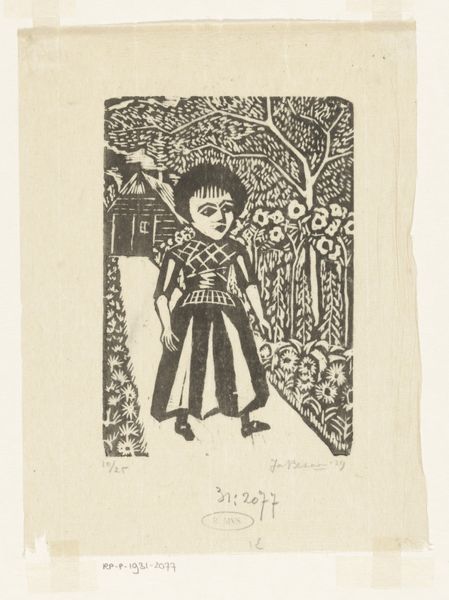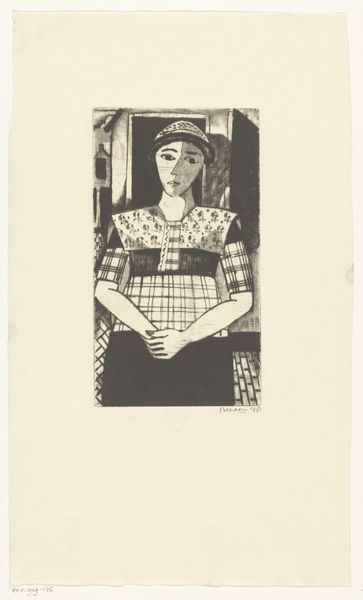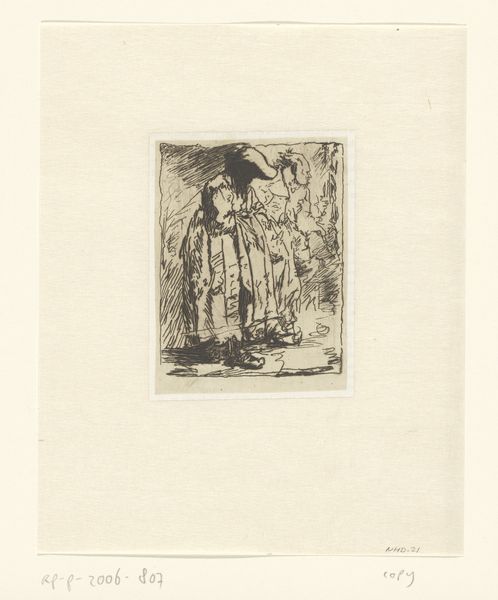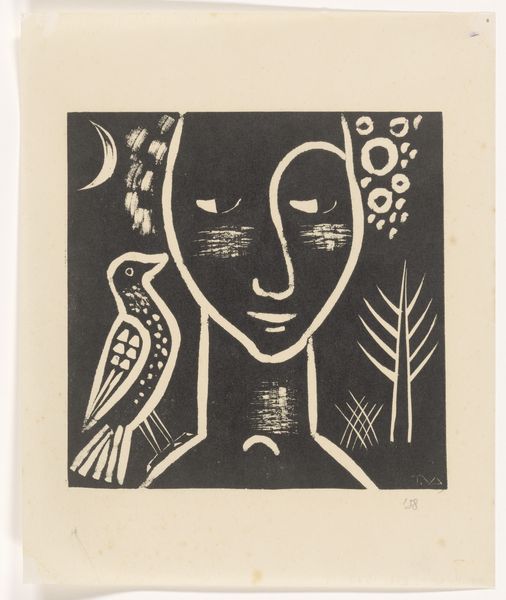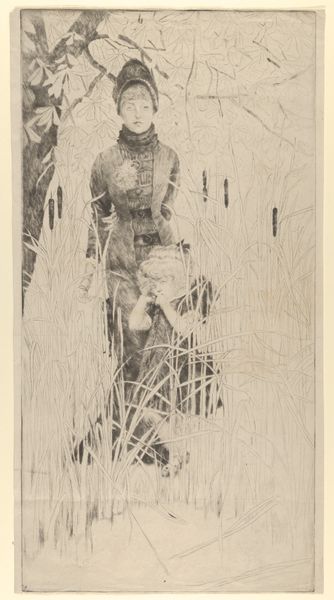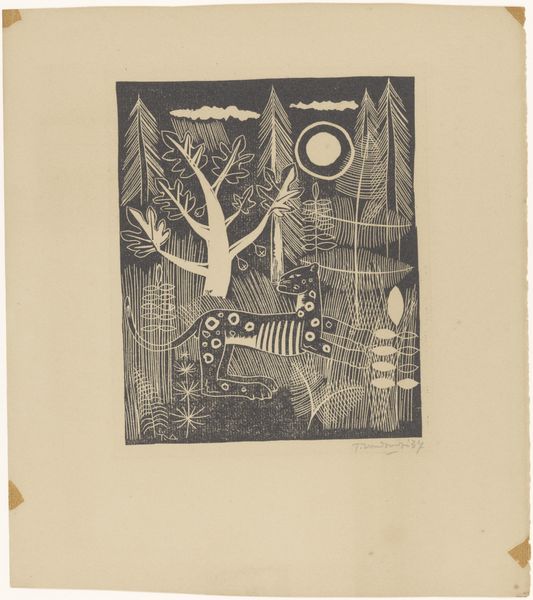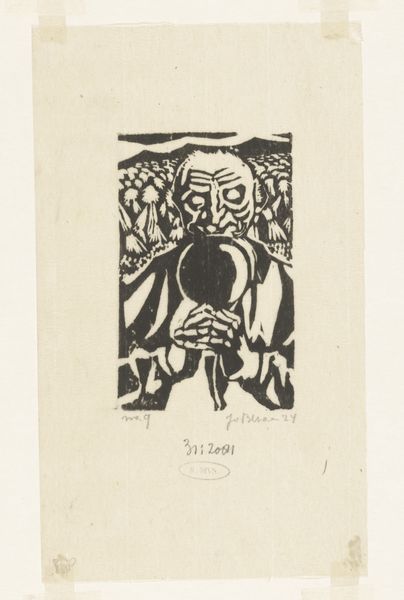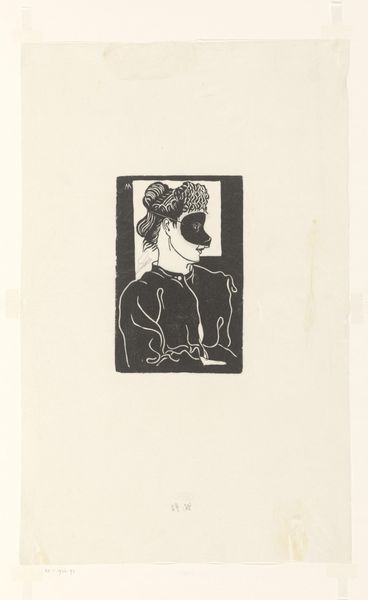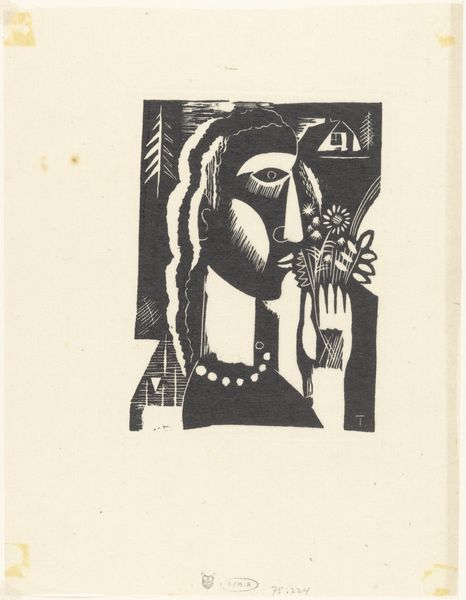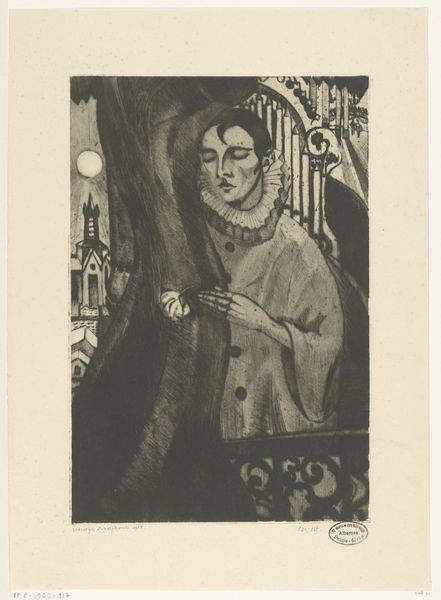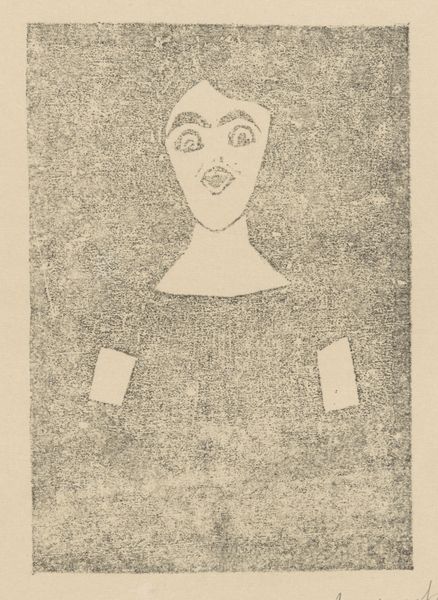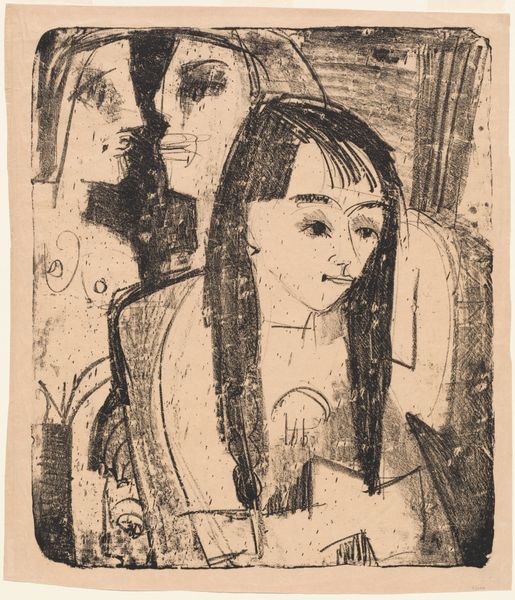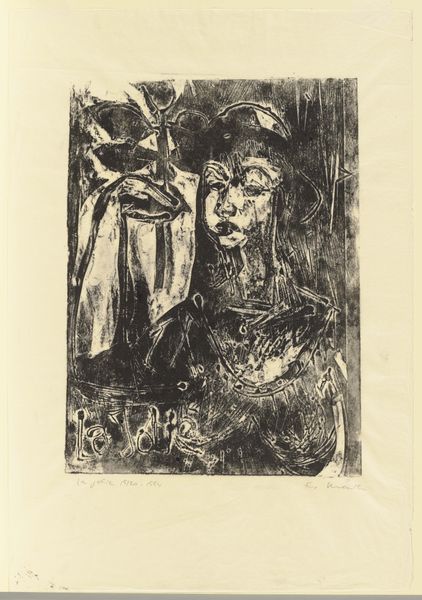
drawing, print, etching, paper, ink
#
portrait
#
drawing
#
ink paper printed
# print
#
etching
#
old engraving style
#
landscape
#
figuration
#
paper
#
ink
#
pen-ink sketch
#
realism
Dimensions: height 184 mm, width 108 mm, height 228 mm, width 144 mm
Copyright: Rijks Museum: Open Domain
Curator: Jo Bezaan created "Voorjaar," or "Spring" in 1948. It's an etching, a type of printmaking, rendered in ink on paper and held in the collection of the Rijksmuseum. Editor: Immediately, the composition strikes me as delicately haunting. It's not explicitly mournful, but there's an arresting quietude about it, wouldn’t you agree? Like a whispered secret caught on paper. Curator: Absolutely. Bezaan's works often play with that kind of nuanced emotion. Her figures are positioned in nature, always a little isolated, but also very much a part of the scenery. Editor: I am thinking about that very intersection. Notice how the artist has placed this solitary girl amidst a flowering tree and fluttering butterflies – visual symbols of hope, growth, renewal, even resurrection – yet she looks away from us, her posture somewhat defeated. Is Bezaan commenting on the elusive nature of hope in a postwar world perhaps? The Netherlands had only recently been liberated at the time. Curator: That's a compelling reading! The imagery resonates powerfully with themes of recovery and the bittersweet realities of springtime renewal after hardship. It's almost like a memento mori, the butterflies a visual reminder of fragility. Editor: There is something unnerving too about the gaze that fails to meet ours. What’s she thinking? To me, she’s both vulnerable and defiant. Curator: The tension is palpable. But Bezaan does that so well. There's an ambiguity, a layered understanding of what it means to be alive, to feel. Perhaps it’s as simple as that. Spring as a metaphor for the precarious balance of youth and looming responsibility. Editor: Or it could speak to broader issues about female autonomy, then and now. She is trapped in her own gaze and at the mercy of how people interpret her gesture: is it joy or sorrow? Either way, it feels generative. The magic of this art lies in its quiet protest! Curator: It invites endless dialogue, doesn't it? Thank you for that thoughtful perspective. Editor: Thank you. This has deepened my appreciation for the complexities within Bezaan’s delicate lines.
Comments
No comments
Be the first to comment and join the conversation on the ultimate creative platform.
